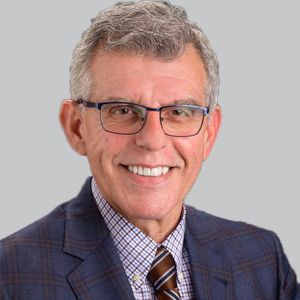Article
Continuous Positive Airway Pressure Shows Minimal Benefit in Elders With OSA
Author(s):
After adjusting for baseline scores, no significant correlation emerged between the changes on Epworth Sleepiness Scale and the number of hours of CPAP use.
David Gozal, MD, MBA, PhD

Post hoc data from 2 open-label, multicenter clinical trials showed that individuals with obstructive sleep apnea (OSA) aged at least 70 years old had low adherence to continuous positive airway pressure (CPAP) with limited treatment effects observed. Investigators concluded that the findings do not support the use of CPAP in this age population.1
To expand on the limited data of CPAP in the very elderly, senior author David Gozal, MD, MBA, PhD, professor of pediatric pulmonology, University of Missouri School of Medicine, and colleagues conducted analyses of 369 individuals with moderate-to-severe OSA randomized to receive either CPAP or no CPAP for 3 months. Eligible patients had at least 15 events per hour on apnea-hypopnea index and were assessed on change in Epworth Sleepiness Scale (ESS), the primary outcome. The mean age of the cohort was 81.5 years (standard deviation [SD], 2.4), with 26.3% (n = 97) of the sample aged at least 80 years. Patients used CPAP for an average of 4.3 hours/night (SD, 2.6), with 53% of the population using the device for at least 4 hours per night (considered good adherence).
At follow-up, investigators recorded a significant improvement in snoring (–58%; P = .001) and witnessed apneas (–35%; P = .006) with treatment of CPAP, but no significant changes occurred in symptoms such as choking nocturia, or nightmares. Additionally, these patients in the demonstrated ESS values of 9.1 (SD, 3.9), a decrease of 1.2 points (95% CI, 0.2 to –2.6), after adjusting for baseline ESS values, compared to the control group (P >.05). No significant correlation was observed between the change in ESS values and the number of hours of CPAP use (r = 0.1; P = .11).
READ MORE: Actigraphy Identified as a Valid Tool for Sleep Assessment in Children With Cerebral Palsy
Quality of life, measured using Quebec Sleep Questionnaire (QSQ), indicated no statistical or clinical improvements for those on CPAP compared with the control group, while adjusting for their corresponding baseline values. Moreover, no evidence of a significant correlation emerged for the changes between groups in the different domains of QSQ and the number of hours of CPAP use.
Gozal et al concluded, "Considering the growing population of elderly patients that is being referred for sleep consultation, large clinical trials are urgently needed to try to solve key questions such as: What phenotype of patients over 80 years of age will benefit from CPAP? Should elderly patients be monitored in a special way? Is CPAP in extreme elderly a cost-effective treatment? And, once CPAP treatment is initiated, should it last forever?"
Compared with controls, CPAP-treated patients showed no difference in the changes for either office-based systolic blood pressure (–0.3 mm Hg vs –0.5 mm Hg; P = .9) or diastolic blood pressure (–1.2 mm Hg vs –1.1 mm Hg; P = .9). Depression and anxiety, calculated through the Hospital Anxiety and Depression Scale (HADS), did not show a clinically significant improvement after treatment with CPAP. Similarly, no improvements occurred in the digit span and digit symbol test results.
Patients included in the study also completed the Trail Making Test (TMT), a neuropsychological test that involves visual scanning and working memory. The TMT-A median values were 95 (interquartile range [IQR], 65-210) and 97 (IQR, 60-170) at baseline, and 90 (IQR, 49-185) and 99.5 (IQR, 65-210) at the end of the follow-up for the CPAP and control groups, respectfully. Similarly, investigators saw TMT-B values of 275 (IQR, 165-300) and 199 (IQR, 149-300) at baseline for the 2 groups, and 268 (IQR, 160-360) and 201 (IQR, 151-300) at the end of follow-up for the same groups, respectively. All told, no statistical differences were observed after adjusting for corresponding baseline measures (TMT-A: –9.5 [95% CI, –16.3 to 37.2]; P = .45; TMT-B: –9.0 [95% CI, –29 to 8.4]; P = .41).




